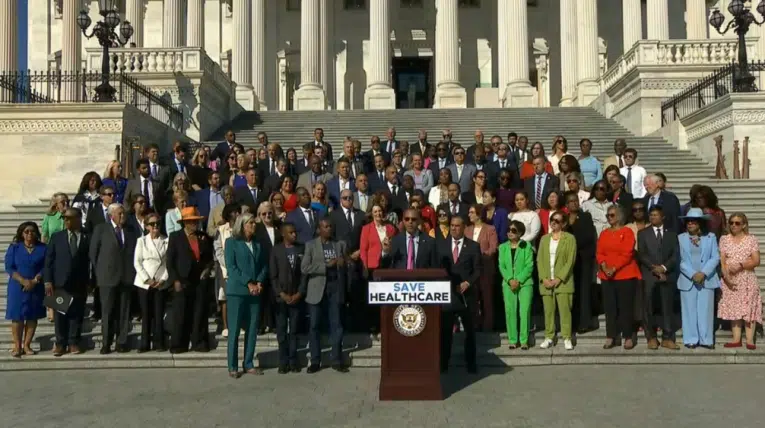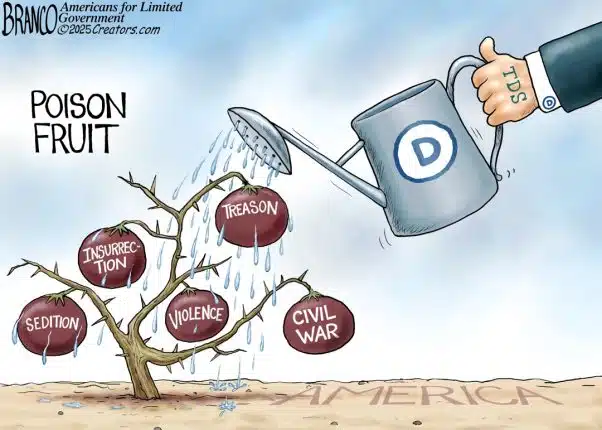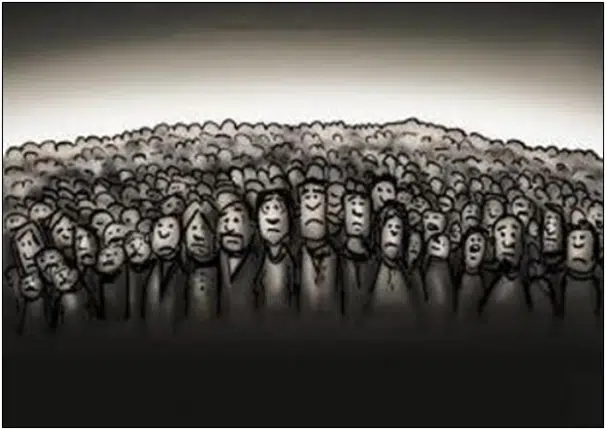By Bill Wilson –
 The U.S. could be committing as much as $254 billion to the European bailout via the Federal Reserve ($200 billion) and the International Monetary Fund ($54 billion), reports CNBC. That money will in part be used to provide liquidity to the European Central Bank (ECB) to purchase sovereign debt bonds from troubled states like Greece, Portugal, and others. ECB could wind up purchasing as much as €1.7 trillion of junk government bonds to keep European nations from defaulting on their debt obligations, with the Federal Reserve as an apparent underwriter.
The U.S. could be committing as much as $254 billion to the European bailout via the Federal Reserve ($200 billion) and the International Monetary Fund ($54 billion), reports CNBC. That money will in part be used to provide liquidity to the European Central Bank (ECB) to purchase sovereign debt bonds from troubled states like Greece, Portugal, and others. ECB could wind up purchasing as much as €1.7 trillion of junk government bonds to keep European nations from defaulting on their debt obligations, with the Federal Reserve as an apparent underwriter.
In this new world order of perpetual bailouts — first, mortgage-backed securities (MBS) and now, sovereign debt bonds — central banks are racing against time to shore up what would otherwise be critical, wide-ranging defaults by financial institutions, central banks, and even governments. Unfortunately, government’s basic “solution” to the debt crisis is not to cut spending, per se, it is to print and lend more money to cover the losses.
Importantly, the new money put into the system has not been withdrawn — in fact, the supply is as high as ever. As a result, money is rapidly losing its real value. But investors seem okay with that, because they have been green-lighted to continue to purchase junk securities and bonds, knowing that central banks and governments have guaranteed that they will pay out. As a bonus, the “riskier” government-guaranteed bonds are offering higher yields than the “safer” investments of solvent states.
The defaulting governments and financial institutions holding their debts are okay with the bailout, too, for the obvious reason that they are saved from bankruptcy and temporarily absolved from having to make tough choices to slash public spending to sustainable levels.
Basically, the Fed and other central banks’ plan is to subsidize risk at exponentially increasing levels. This is essentially a transfer of default, from the at-fault institution or government, to the new creditor. Increasingly, that creditor is the Federal Reserve (i.e. the American people), which since the collapse began in 2007 has volunteered to debase the dollar in order to stand in the way of deleveraging.
How did we get here? Poor risk management. Prior to the bailouts, too-low capital requirements for financial institutions, banks and other entities resulted in a complete overleveraging on investments across the board. That means institutions only held a limited amount of capital to cover losses on purchases of everything from MBS to corporate bonds to government bonds. For example, as noted by Senator Jim DeMint, Fannie Mae and Freddie Mac were overleveraged by about 70-to-1 if not more. Bear Stearns was overleveraged by as much as 38-to-1, according to Huffington Post. AIG by 8-to-1 prior to its bailout, as noted by John Appel.
When the losses came to these and other institutions, instead of utilizing bankruptcy proceedings, the Federal Reserve intervened by pumping new money into the system, and Congress acted through the establishment of the Troubled Asset Relief Program. None, not Fannie, Freddie, AIG, GM, nor Chrysler have actually been “saved.” They all remain under government control.
After the Troubled Asset Relief Program was transformed into a bank recapitalization fund, the Fed undertook the responsibility of purchasing the junk MBS and corporate debt (mostly from Fannie Mae and Freddie Mac) — of which it currently holds about $1.265 trillion worth. This saved the holders of those securities from losing their money.
Making matters worse, the Federal Reserve holds more than $776.7 billion in outstanding U.S. Treasury securities, which puts it right in between China and Japan in terms of being the top holder of U.S. debt. In the past year alone, the Fed has bought over $216.1 billion in treasuries, making it the nation’s fastest-growing creditor. This has accommodated the government in financing a deficit that is projected to exceed $1.556 trillion this year.
Add to that the approximate $200 billion projected by Michael Pento, chief economist at Delta Global Advisors, from the Fed to bail out Europe, and the grand total for the Fed’s ongoing intervention to essentially nationalize both private and public debts rises to over $2.241 trillion.
Proponents of the bailouts argue that we have no choice, that losses on this scale cannot be solved through the basic concepts of thrift, savings, and debt reduction.
The truth is, when the numbers are dissected in this manner, it becomes very obvious why the establishment press and innumerable politicians are saying that the Fed and other government interventions “saved” the global economy.
Minus the Fed interventions into the mortgage and derivatives markets, and now into sovereign debt, AIG, Fannie and Freddie would simply be gone, the U.S. might not be able to sell enough treasuries to keep up with paying off the principal owed on the national debt, and the entire continent of Europe would now be well underway to a complete default. And, without the Troubled Asset Relief Program, GM, Chrysler, Citigroup and perhaps other financial institutions would likely have been wiped out, too.
In the least, the establishment that sits atop this house of cards was “saved,” but only through a “pretended payment,” to quote Adam Smith, by way of printing new money. This has shifted the default burden from the bailed-out establishment to the American people instead, which in turn allows a few politically-favored institutions to survive and profit handsomely from the perpetuation of the Ponzi scheme.
However, the “rescue” or perpetuation of this system will only be temporary, because the system was already unsustainable — else it would not have begun to collapse. Unless there is another intervening force, it will keep right on collapsing.
So, this is the Fed’s world-historical gamble: That there will be a robust economic recovery propelled by enough growth that the central banks and intervening governments can draw down their bailouts. Debt could then be converted into wealth.
There’s a hitch. To work, the recovery will have to outpace the growth of debt. In other words, the central banks will require the cooperation of the intervening fiscal authorities (i.e. Congress and other sovereign legislatures throughout the world) to balance their budgets. The Fed knows this, which is why Fed Chairman Ben Bernanke has repeatedly testified that the nation’s fiscal trajectory is unsustainable.
Only, Congress is not playing along. As noted above, this year the budget deficit will be about $1.556 trillion, but believe it or not, balancing the budget through spending reductions alone would be the easiest, least risky, most cost-effective path to restoring sustainable economic growth. Although, spending cuts are also perhaps the most politically painful.
But at least cutting spending is within the realm of possibility. The far greater challenge would be in attempting to stoke enough economic growth to increase revenue to somehow stay ahead of the current growth of debt. This path by far bears the most risk, because the essential cost of failure is sovereign default. It is also the least cost-effective, because it anticipates no reduction in spending — ever.
Unfortunately, this is the path that Barack Obama has chosen on the fiscal side of the equation. His ten-year budget will increase the national debt by $10.663 trillion (70.41 percent) from 2011 through 2020, resulting in a national debt of $25.777 trillion by 2020. The White House Office of Management and Budget’s (OMB) own economic assumptions only project the annual Gross Domestic Product to increase $8.809 trillion (56.78 percent) during that same period, growing to $24.323 trillion in 2020.
This is the nightmare scenario, where the national debt will grow faster than the economy’s ability to pay for it.
This makes OMB’s revenue projections highly dubious. The White House optimistically projects that annual revenue will grow from $2.567 trillion in 2011 to $4.710 trillion in 2020, a whopping increase of $2.143 trillion (83.48 percent or 8.34 percent each year).
So, Barack Obama is saying that taxation will somehow grow faster than economic growth, which it says will be a rosy 5.67 percent on average every year. To the extent that OMB’s revenue projections are off, there will be that much more debt accumulated.
As if things could not get any worse, because of the claim that taxation will grow faster than the economy, the Administration can only mean to do so through some combination of higher rates of taxation on personal and corporate income, death taxes, and/or through new national sales and bank taxes.
According to William Beach, Director of Data Analysis for the Heritage Foundation, OMB’s economic assumptions are wrong, and thus its revenue projections are most likely way off. He notes that as the national debt rises over the next ten years, the interest owed on the debt will rise (up to $840 billion by 2020 according to OMB), and so too will interest rates rise. Beach notes that this will negatively affect the economy, causing the cost of capital to rise and resulting in less investment, less new business creation, less economic growth, and thus less new jobs.
That is because the increased trade of bonds, securities, mortgages, credit, and other forms of debt at higher interest rates actually represents a tremendous misallocation of resources away from productive sectors of the economy.
Therefore, there would most likely be less taxable income than is projected by OMB. When the White House’s modeling fails to produce the increased revenues necessary to stay ahead of debt accumulation, the whole house of cards could come crumbling down.
The outlook is not promising. On Wednesday, the Treasury Department announced that the budget deficit for April was $82.69 billion, some $40 billion more than was projected by Wall Street economists. Making matters worse, the Congressional Budget Office has projected that OMB’s revenue projections are off by as much as $1.839 trillion for 2011 to 2020, which would mean that OMB’s ten-year debt projection of $10.663 trillion would be off by at least that much.
That could be the difference between the U.S. credit rating being downgraded or not. A Moody’s debt downgrade could occur if interest-owed-to-revenue exceeds 18 to 20 percent, as reported by Investor’s Business Daily (IBD). IBD reports that according to Congressional Budget Office projections, that threshold would be reached in 2018, and Moody’s says that under an adverse scenario, that threshold could be reached as soon as 2013.
If that happens, the demand for U.S. treasuries would drop like a stone, the dollar would sink, and the Fed would presumably have to fire up the printing presses once again for another bailout, this time to prevent a U.S. sovereign debt default, and to keep up with the escalating costs of financing Washington’s insatiable appetite for deficit-spending. But again, we’ll only be pretending to pay our bills.
At that point, the U.S. may not immediately recognize that it is no longer the world’s top superpower. But, in truth, the house of cards will have finally fallen.
Bill Wilson is the President of Americans for Limited Government.






